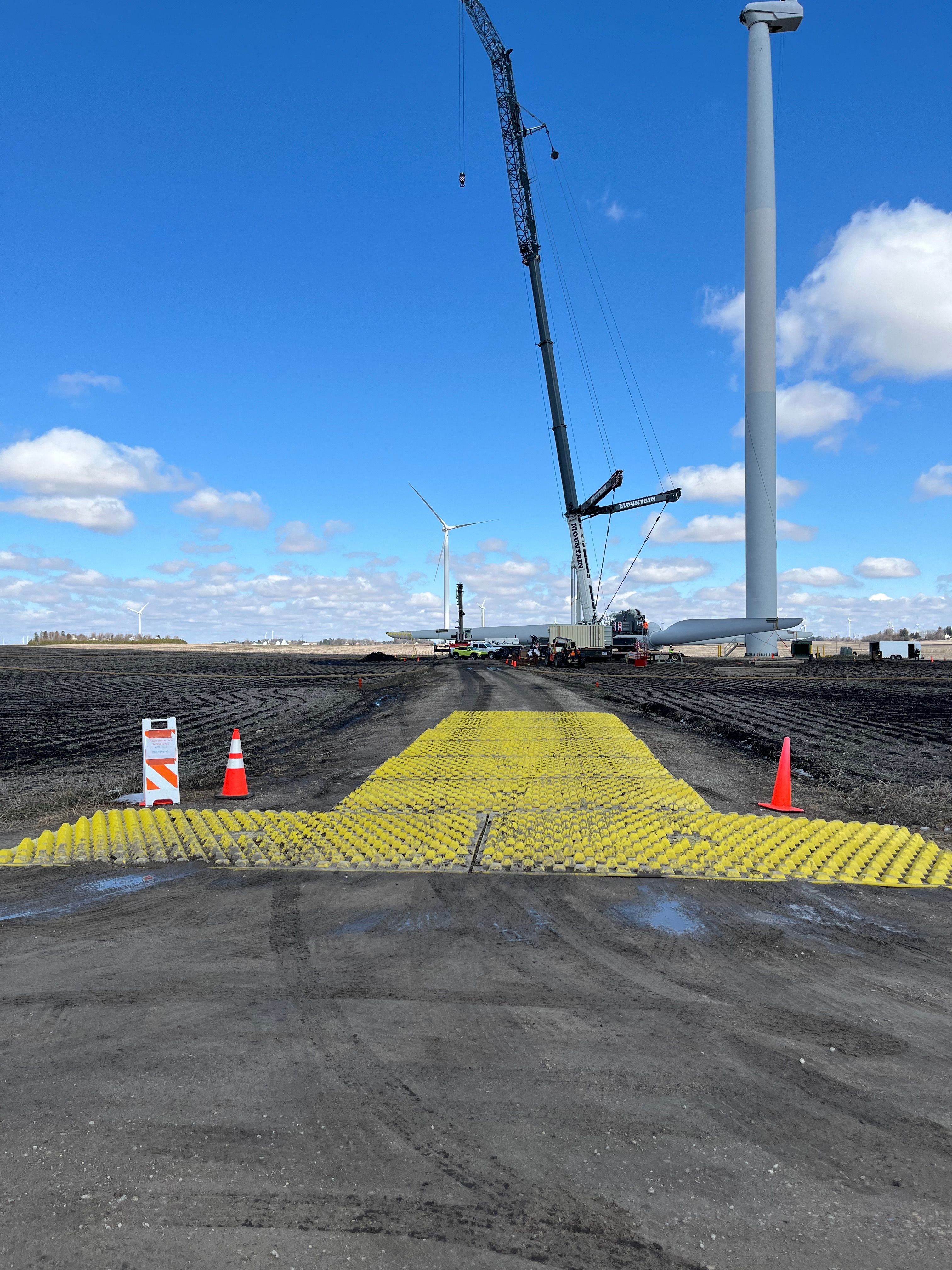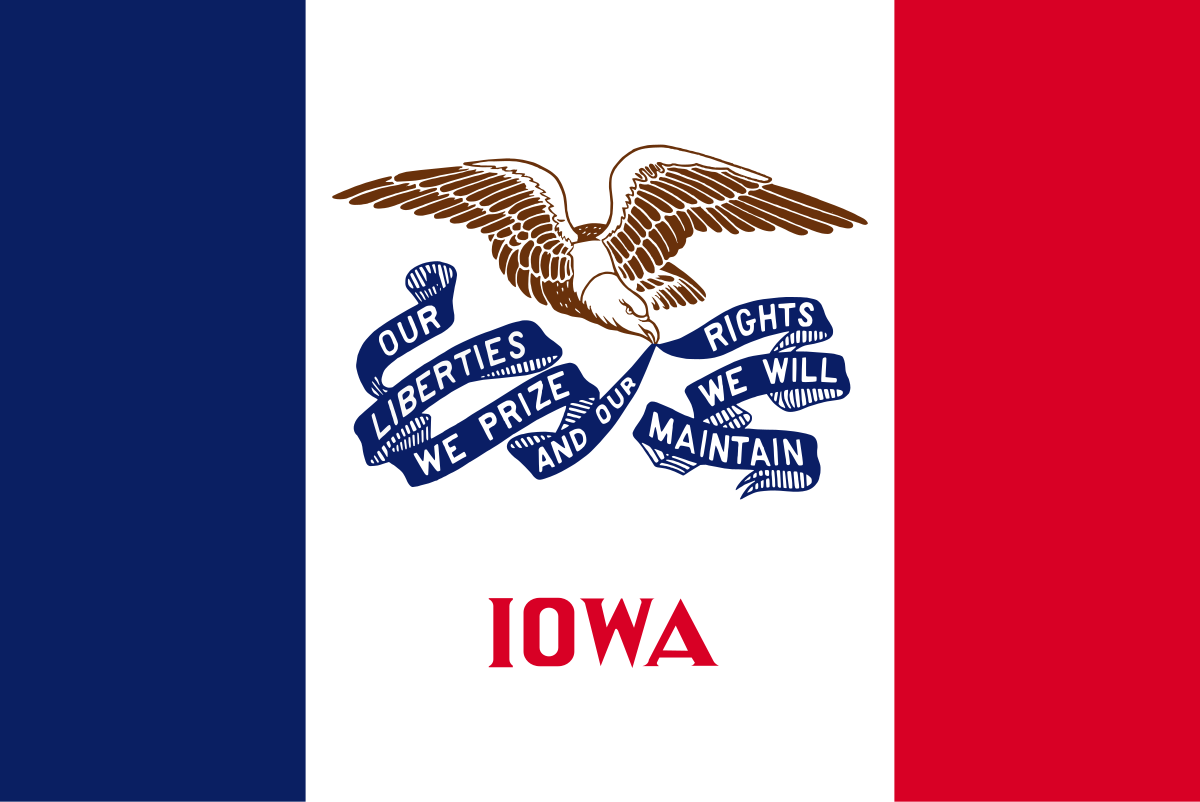Iowa Stabilized Construction Entrance Detail
Adjacent to the Missouri, Mississippi and the Big Sioux rivers Iowa is the only state whose East and West borders are almost completely formed by rivers. Prior to western settlements in the region Iowa was covered by nearly 9 million acres of wetlands. A vast majority of these wetlands have been emptied and replaced by prairie and agriculture; combined these make up 90% of the geological landscape of modern Iowa. The drainage system created to dissolve the wetlands continues to direct the flow of runoff water throughout the state. The stormwater is collected in several natural and manmade lakes the most notable of these are the chain of lakes known as the Iowa Great Lakes.
The surface waters in Iowa are utilized for agricultural irrigation and public drinking water and therefore are critical aspects of both the economy and public health of the state. Another major source of water in Iowa is the Jordan Aquifer. Both of these resources have been overused and exposed to pollutants that have limited their ability to supply the state with quality water. The ecosystem also suffers from the degrading water purity as the list of endangered species lengthens.
The mitigation and reversal of these concerns is the responsibility of the residents, visitors, businesses, and government agencies within the state. Recognizing the main points of pollution introduction into the stormwater drainage system is the first step in protecting the purity of the surface waters. Acting from this knowledge and working together to create and implement plans that work to mitigate these pollutants is vital to improving and protecting the safety of Iowa.
IOWA Department of Natural Resources (DNR) NPDES Stormwater Construction Permits
Iowa’s Department of Natural Resources (DNR) administers the National Pollution Discharge Elimination System (NPDES) permit program which regulates all surface water discharges. The NPDES stormwater permit program requires construction, industrial, and municipal operators to obtain a NPDES permit before commencing activity. NPDES permits are required before any construction activity that disturbs and area equal to or larger than one acre.
The most common permit for most construction activity is the General Permit No 2 (Storm Water Discharge Associated with Construction Activities) In order to receive an NPDES permit the operator of the construction site will be required to write a Notice of Intent (NOI) describing the scope of the construction plan and timeline. Another necessary step in receiving a NPDES permit is to create a Stormwater Management Plan (SMP). The SMP identifies the probable points of pollution discharge from the construction area and techniques which will be used to mitigate the introduction of these impurities to the stormwater system. Guidance for choosing techniques, also called Best Management Practices or BMPs, are listed in the Iowa Construction Site Erosion Control Manual.
Stabilized Construction Entrance Detail
One of the first BMPs to be implemented on any construction site is the stabilized construction entrance which is designed to prevent erosion and sediment tracking off of the construction site on vehicle tires. The stabilized construction entrance works in conjunction with other BMPs including street sweeping, sediment traps, silt curtains, erosion fences, and vehicle egress sediment trapping. Temporary construction entrance are placed at all egress points from the construction site where traffic will exit directly onto a paved roadway or public right-of-way. This Stabilized Entrance works by removing soil and other pollutants from construction vehicles tires.
All construction entrance BMPs require regular maintenance to ensure proper function. In addition, street sweeping is required for any debris that escapes the entrance and is deposited onto the active roadway. Inspections should be conducted regularly and after any rain events to ensure that sediment is effectively minimized and to address any damage to the construction entrance.
Gravel Construction Entrance
The Manual includes an example stabilized construction entrance design which uses a traditional aggregate based system to clean vehicle tires before they exit the job site. A stone stabilized construction entrance is constructed by installing a pad of two inch crushed rock or gravel aggregate. The area is filled to a minimum depth of 6” over an area of 50’ in length. The rough surface created by the crushed stone acts on vehicle tires to capture sediment and debris. Rocks should be sized to the largest vehicles on site to prevent traffic hazards. Small rocks may be tracked onto the active roadways, or become lodged between dual tire vehicles and expelled at high speeds.
The entrance should be monitored daily as the gravel will become compacted and saturated with sediment and and debris. When the surface is no longer rough, operators must introduce additional aggregate to ensure adequate performance. If the aggregate entrance is ineffective at removing sediment from the vehicles the length of the pad must be extended in order to effectively protect the public roads and stormwater system from the sediment. A wheel wash is commonly added to a gravel entrance to remove any pollutants that still cling to the vehicle.
Wheel Wash
When a stone stabilized construction entrance is not sufficient to contain the tracking of sediment onto the roadway, a wheel wash is often used. Wheel washes can be used as a stand alone BMP or as a supplement to an aggregate construction entrance. A wheel wash, wash rack, or tire wash station is a area where a vehicle can receive additional cleaning from pressurized water to clean vehicle tires. Wheel wash stations will require a source of power and water to operate. The wheel wash requires a water supply and the installation of a sediment basin to collect, filter, and appropriately discharge the used water.
FODS Trackout Control System
The FODS Stabilized Construction Entrance System is a modular, reusable BMP designed to minimize construction site track out. The system is comprised of durable 12’ wide by 7’ long matting which is formed into pyramids. The pyramids create a rough surface which causes tire treads to spread open and release trapped debris.
Compared to traditional techniques, FODS offers a number of benefits to site operators. The FODS system does not degrade or become compacted over time and is up to 59% more effective than aggregate based systems. FODS can be installed over any substrate and does not require any power or water source to operate. Because the system does not use rock, the risk of rocks entering the roadways or being expelled from dual tire vehicles.
Because the system is more effective than rock, the mats are well suited for compact work environments. A 1x5T mat configuration (35’ long) is commonly used to replace 70’ rock entrance while providing a wide turning radius for exiting traffic. The mats provide a significant savings to contractors as they can be reused for 10+ years, eliminating the cost of construction entrance materials. FODS can be installed in as little as 30 minutes and can be anchored to dirt or on concrete and asphalt in urban settings.
The system is easily deployed in as little as 30 minutes which allows contractors to relocate and reuse the system as needed on each project. The mats are designed to be reused on multiple projects throughout their 10+ year lifespan.

